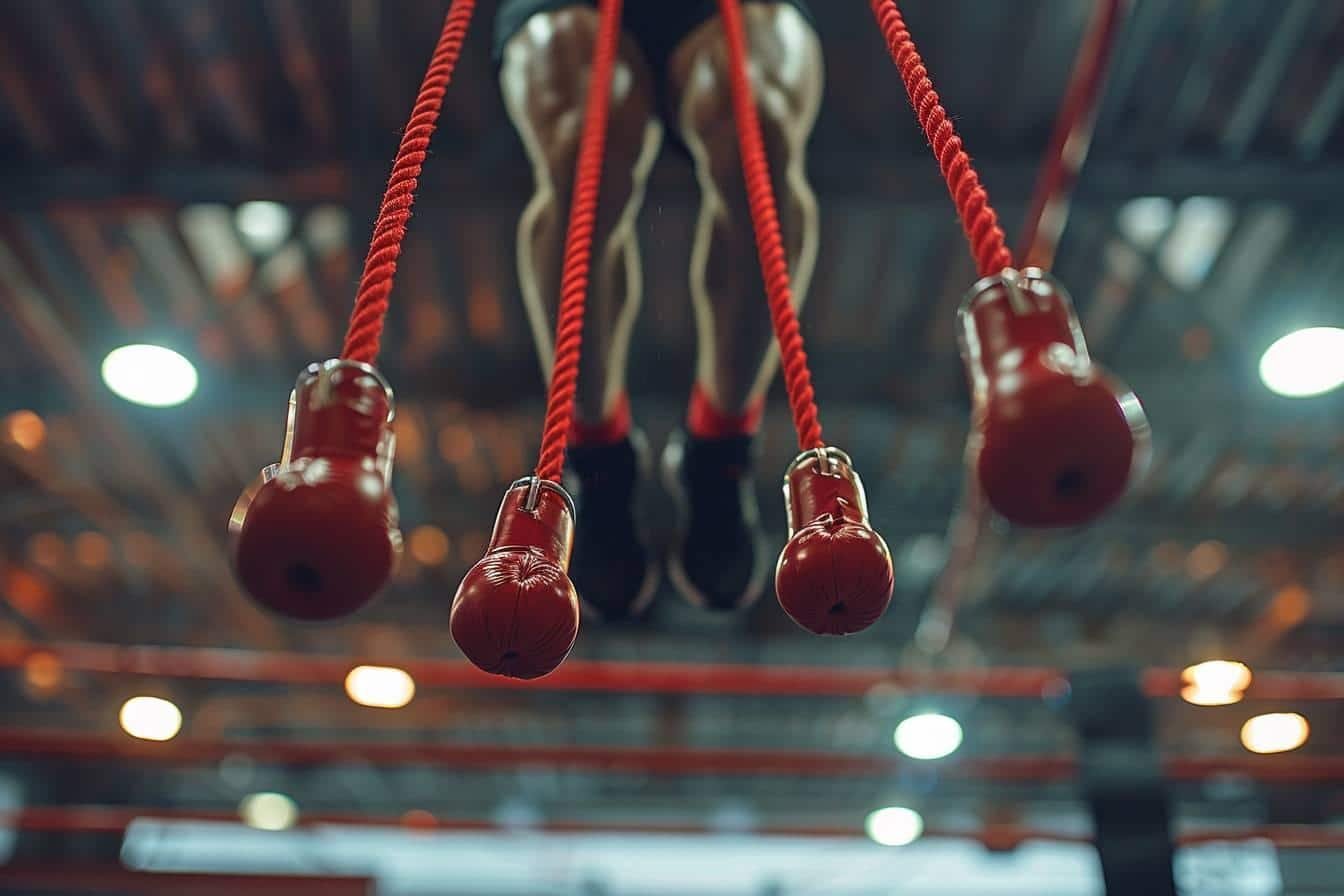The article in brief
Footwork in boxing is essential for performance. Here are the keys to perfecting this essential skill:
- Basic position and balance straight posture, weight on the front of the feet
- Basic movements chassé steps, pivots, angles, dodges
- Advanced techniques : shadow boxingagility scale, skipping rope
- Progressive training from the simple to the complex, including sparring
- Optimisation : balanced nutrition and adequate recovery
Footwork is a crucial element in boxing, enabling fighters to move with agility, dodge punches and find effective angles of attack. Mastering this skill can mean the difference between victory and defeat in the ring. Let's take a look at how to perfect this essential aspect of boxing.
The basics of boxing footwork: understanding to progress
Before embarking on specific exercises, it is essential to understand the fundamentals of the boxing footwork. This understanding will enable you to optimise your training and rapidly improve your performance.
Basic position and balance
The basic stance is the starting point for all boxing movements. It consists of :
- Keep an upright, relaxed posture
- Stay on the front of your feet
- Distribute your body weight evenly
Good balance is essential if you are to link up your movements with fluidity and power.
Fundamental movements
The main movements to be controlled are:
- Les pas chassés
- The pivots
- Angled movements
- Dodging and slipping
These movements allow you to manage your distance from your opponent and create attacking opportunities.
Coordination and energy savings
Effective footwork involves perfect coordination between the upper and lower body. You need to learn to take small, quick steps rather than large ones, which saves energy while remaining mobile. This approach is particularly important in prolonged bouts.
Advanced techniques to improve your day-to-day footwork
Once you've learned the basics, it's time to move on to more advanced techniques for improve your boxing footwork. These exercises can be practised regularly to obtain convincing results.
Shadow boxing: your best ally
Shadow boxing is an excellent way to work on your footwork without a partner. It allows you to :
- Refine your movement technique
- Improving coordination
- Increase your endurance
Practice shadow boxing in front of a mirror to correct your posture and movements in real time.
The agility scale: precision and speed
Using an agility ladder is an excellent way of developing the precision and speed of your feet. This tool allows you to work on :
- Foot-eye coordination
- Travel speed
- The ability to change direction quickly
Incorporate agility ladder exercises into your training routine for quick results.
Skipping rope: cardio and coordination
The skipping rope is a classic in boxing training. It offers a number of advantages:
- Improving cardiovascular endurance
- Strengthening leg muscles
- Developing coordination
Vary the types of jumps (single, cross, alternate) to maximise the benefits of this exercise.
From footwork to practice: incorporating exercises into your training routine
To make real progress, it's vital to incorporate footwork into your daily training routine. Here's how to structure your sessions for optimum results.
Targeted warm-up
Always start with a warm-up specific to footwork. This can include:
- Rotating the ankles
- Dynamic slots
- Light chassés
A good warm-up prepares the body and mind for the more intense exercises that follow.
Exercise progression
Structure your training by progressing from simple to complex. For example:
- Start with basic exercises such as chassé steps
- Then move on to coordination exercises such as agility ladder work.
- Finish with more intense exercises such as shadow boxing or light sparring.
This progression enables all aspects of footwork to be worked on consistently.
Sparring and role-playing
To really integrate the techniques you've learnt, it's crucial to put them into practice in real-life combat situations. Sparring allows you to :
- Testing your footwork under pressure
- Learning to read your opponent's movements
- Developing reflexes and rapid decision-making skills
Start with light sparring and gradually increase the intensity as your confidence grows.
| Exercise | Duration | Frequency |
|---|---|---|
| Shadow boxing | 15-20 minutes | 3-4 times a week |
| Skipping rope | 10-15 minutes | 5-6 times a week |
| Agility scale | 10 minutes | 2-3 times a week |
| Sparring | 30 minutes | 1-2 times a week |
Optimising performance: nutrition and recovery
Improving footwork is not limited to physical exercise. Particular attention must be paid to nutrition and recovery to maximise progress.
A balanced diet, rich in protein for muscle rebuilding and complex carbohydrates for energy, is essential. Don't forget to keep properly hydrated, especially during intensive training sessions.
Recovery is just as important as the training itself. Give yourself enough rest between sessions and do stretching exercises to keep your muscles supple and prevent injury.
By following these tips and practising regularly, you'll see a marked improvement in your boxing footwork. Remember that progress takes time and patience. Watch professional boxers for inspiration and keep working hard. Your perseverance will pay off in the ring!
Sources :



